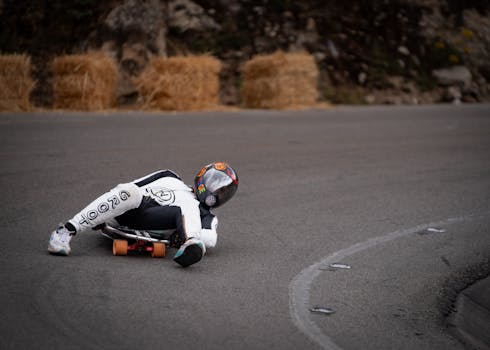Introduction to Street Luge
Street luge is an exhilarating extreme sport that combines speed, skill, and a touch of danger. Riders lie supine on specially designed sleds and race down steep, winding roads, reaching speeds that can exceed 70 miles per hour. This unique sport has gained popularity over the years, attracting thrill-seekers and adrenaline junkies from around the globe. In this article, we will explore the history, equipment, techniques, and safety measures associated with street luge, as well as its growing community and competitive scene.
The History of Street Luge
Street luge originated in the late 1970s in California, where skateboarders began modifying their boards to create a more streamlined and faster experience. The sport quickly evolved, and by the 1980s, dedicated street luge sleds were being manufactured. The first official street luge event took place in 1994, and since then, the sport has continued to grow in popularity.
Understanding the Equipment
Street luge sleds are specifically designed for high-speed descents. Here are some key components of a street luge sled:
- Frame: Typically made from lightweight materials such as aluminum or carbon fiber, the frame provides structural integrity while minimizing weight.
- Wheels: Street luge sleds are equipped with large, soft wheels that provide better grip and shock absorption on rough surfaces.
- Footrests: Riders use footrests to stabilize their position and control the sled during turns.
- Helmet and Protective Gear: Safety is paramount in street luge, and riders must wear helmets, gloves, knee pads, and elbow pads to protect against falls and collisions.
Techniques for Success
Mastering street luge requires a combination of balance, control, and technique. Here are some essential tips for aspiring street lugers:
- Body Position: Riders should lie flat on their backs with their arms extended to the sides for balance. Keeping the body low reduces wind resistance.
- Steering: Steering is primarily done by shifting body weight. Leaning into turns helps maintain speed and control.
- Braking: Riders can slow down by dragging their feet or using a hand brake, but this requires practice to master without losing control.
Safety Measures in Street Luge
Given the high speeds and potential hazards involved in street luge, safety is a critical concern. Here are some safety measures that riders should adhere to:
- Choose Safe Locations: Riders should select smooth, closed roads or designated tracks to minimize the risk of accidents with vehicles or pedestrians.
- Wear Protective Gear: Always wear a certified helmet and protective clothing to reduce the risk of injury in case of a fall.
- Practice with Experienced Riders: Beginners should practice with experienced riders who can provide guidance and tips on technique and safety.
The Growing Community and Competitions
Street luge has developed a vibrant community, with events and competitions held worldwide. Organizations like the International Gravity Sports Association (IGSA) promote the sport and host races. Competitions often feature various categories, including amateur and professional divisions, allowing riders of all skill levels to participate.
In recent years, street luge has also gained visibility through social media and online platforms, where riders share videos of their runs, tips, and experiences. This has helped foster a sense of community and encourage new participants to join the sport.
Conclusion
Street luge is a thrilling and dynamic sport that offers an adrenaline rush like no other. With its unique blend of speed, skill, and community, it continues to attract enthusiasts from all walks of life. As riders push the limits of what is possible on a sled, they also emphasize the importance of safety and technique. Whether you are a seasoned rider or a curious newcomer, street luge promises an unforgettable experience that combines the thrill of speed with the beauty of the open road.
